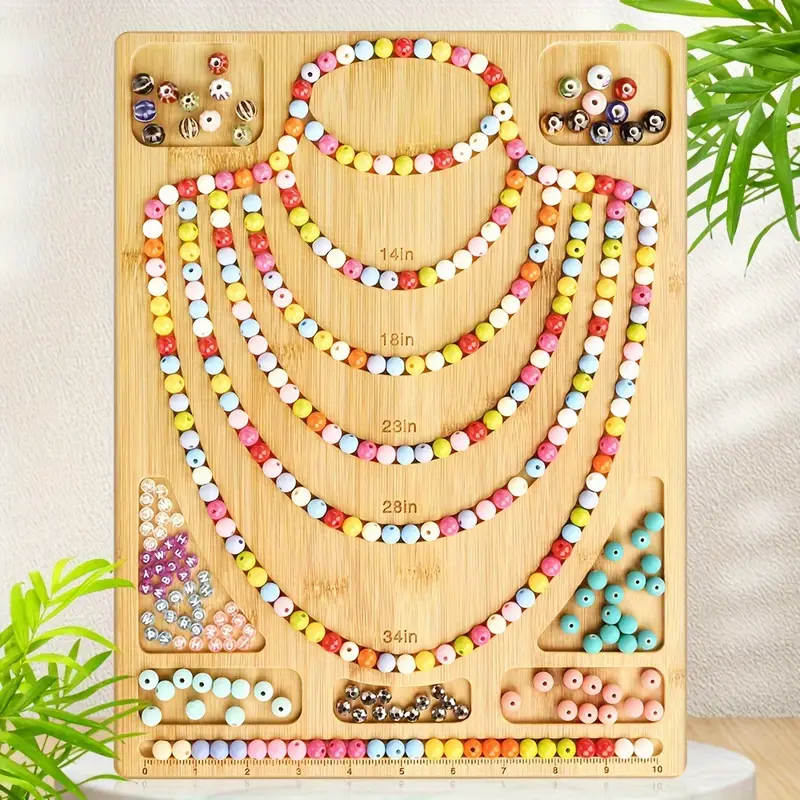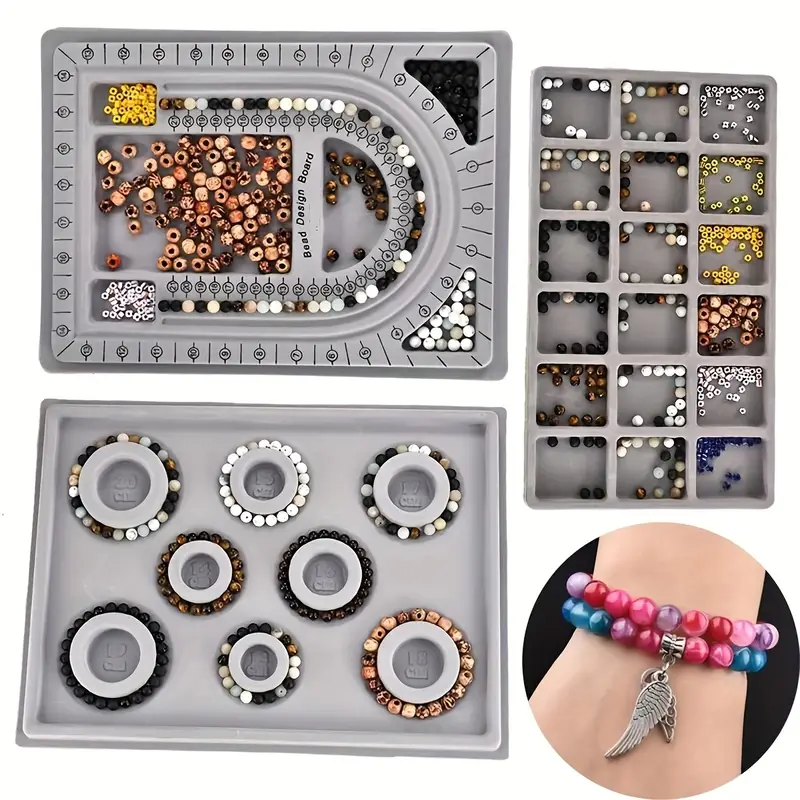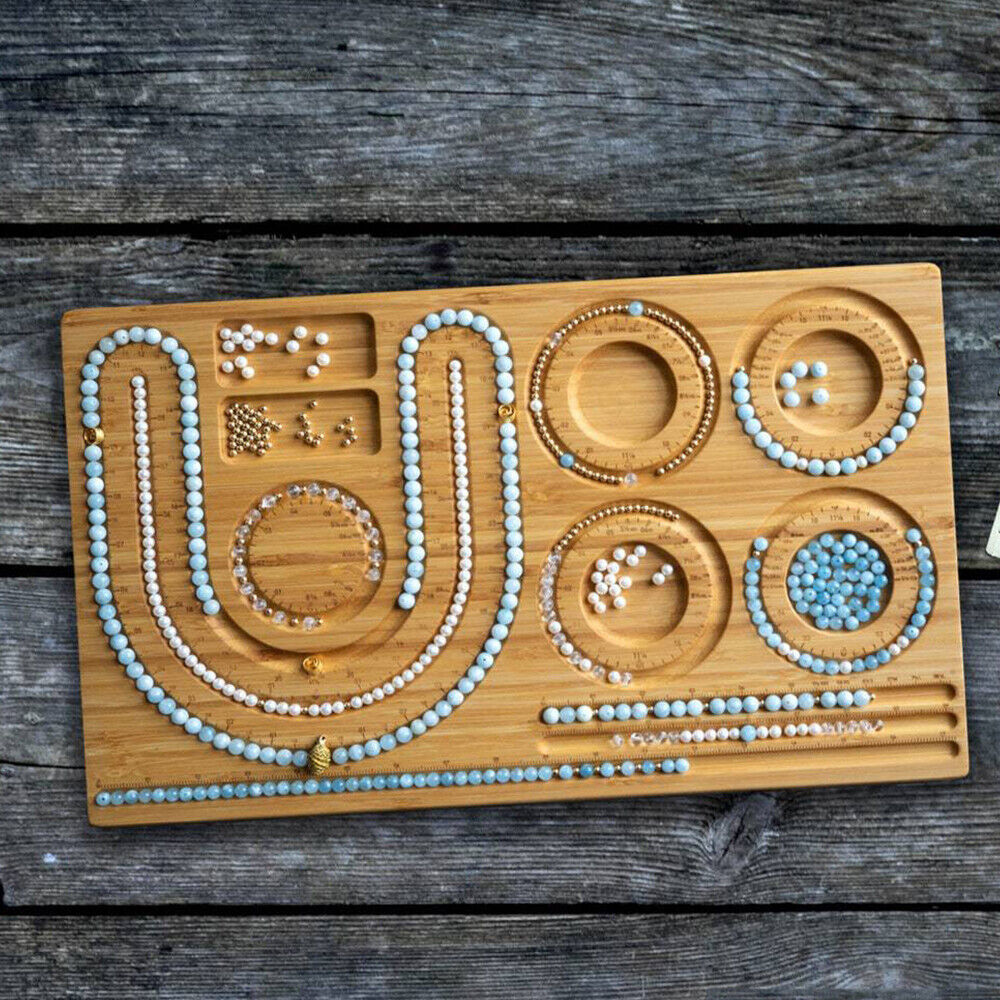Introduction to Beading Trays
Beading is an intricate craft that requires precision and organization. At the heart of this organization is the beading tray, an indispensable tool for artisans. A well-designed beading tray helps streamline the creative process, allowing artists to focus on their designs. They come in various shapes, sizes, and materials, each catering to specific needs and preferences. This article delves into the critical role of beading trays in the crafting process. We will explore their designs, benefits, and essential features.
The Importance of Organization
Keeping Beads in Place
Anyone who has worked with tiny beads understands the frustration of losing them. A beading tray keeps beads organized, preventing them from rolling away. Its divided sections offer designated spaces for different bead types, colors, or sizes. This organization significantly reduces time spent searching for misplaced beads. Additionally, the tray’s firm surface ensures that beads stay where they are placed, safeguarding the delicate balance of a design.
Enhancing Workflow Efficiency
Efficiency is crucial when crafting intricate designs. A well-organized beading tray minimizes unnecessary movements and distractions. By keeping all materials within reach, the tray allows beaders to maintain a steady workflow. Consequently, artists can focus more on the creative aspect of their projects. Furthermore, quick access to beads and tools reduces the risk of errors. In return, this results in cleaner and more polished end products.
Features of an Effective Beading Tray
Customizable Compartments
One of the standout features of an effective beading tray is customizable compartments. These allow artists to tailor the tray to their specific project needs. Different projects may require different organizational structures. For instance, a complex bracelet design may need more small sections, while a necklace might need larger ones. This flexibility is invaluable in accommodating a variety of project scales and complexities.
Non-Slip Surface
Another crucial feature is a non-slip surface. This ensures that beads and tools stay exactly where they are placed. A non-slip surface can significantly enhance precision in placing and stringing beads. It reduces accidental spills and the subsequent frustration and time wasted in re-organizing materials. Many trays incorporate materials like rubber or foam to achieve this effect. This simple yet effective feature can greatly improve the crafting experience.
Materials and Construction
Plastic Beading Trays
Plastic beading trays are among the most common types available. They are lightweight, durable, and affordable. The plastic surface is generally easy to clean, making it practical for long-term use. Many plastic trays come with lids or covers, adding an extra layer of protection. This is particularly useful for beaders who need to transport their projects. The durability of plastic ensures that the tray can withstand regular handling and accidental drops.
Wooden Beading Trays
For those who prefer a more eco-friendly option, wooden beading trays are an excellent choice. They offer a sturdy and aesthetically pleasing alternative to plastic. Wooden trays are often handcrafted, adding a unique, artisanal touch to the beading process. The natural texture of wood can also provide a better grip for beads. Although typically more expensive, their durability and aesthetic appeal often justify the cost.
Specialized Beading Trays
Travel Beading Trays
Travel beading trays are designed for beaders on the go. These trays are usually compact, lightweight, and come with secure lids. The thoughtful design ensures that beads and tools remain organized and safe during transit. Travel trays often include foldable compartments, making them incredibly space-efficient. This specialization is perfect for artists who attend workshops or enjoy crafting while traveling.
Magnetic Beading Trays
Magnetic beading trays offer a unique advantage for organizing metal components like needles and clasps. The magnetic feature keeps these small items in place, reducing the risk of losing them. These trays are particularly useful for beaders who use a lot of metal findings in their projects. Additionally, the magnetic surface is often coupled with customizable compartments. This combination creates a highly efficient and organized workspace.
Choosing the Right Beading Tray
Assessing Your Needs
The first step in choosing the right beading tray is assessing your specific needs. Consider the types of projects you most frequently undertake. Are they small and intricate or large and complex? Think about the materials you use most often. This could be beads, metal findings, or other embellishments. Also, factor in whether you need a portable solution. Your answers to these questions will guide you towards the most suitable beading tray.
Budget Considerations
While beading trays range in price, it’s essential to find a balance between cost and quality. Cheaper trays may save money upfront but often lack durability. Investing in a higher-quality tray might be more economical in the long run. Remember, a good beading tray is a valuable tool that can enhance your crafting experience. Often, spending a bit more upfront results in a more satisfying and productive beading process.
Maintenance and Care
Regular Cleaning
Maintaining a beading tray is relatively straightforward but essential for longevity. Regular cleaning is necessary to keep the tray in good condition. For plastic trays, a simple wipe down with a damp cloth usually suffices. Wooden trays may require a bit more care. Using a mild wood cleaner and a soft cloth can help maintain their luster. Consistent maintenance ensures that your tray remains functional and aesthetically pleasing.
Proper Storage
Proper storage is another critical aspect of maintaining your beading tray. When not in use, it’s best to store the tray in a dry, cool place. This practice prevents warping or damage from humidity and heat. If your tray comes with a lid, use it to protect the contents from dust and debris. Ensuring your tray is stored correctly will help it last longer and stay in good condition.
The Impact of Beading Trays on Artistry
Improving Design Precision
A beading tray’s organization significantly impacts the precision of an artist’s designs. With everything in its place, mistakes and missteps are less likely. This level of organization allows artists to execute their visions with exactness. Precision is particularly crucial in intricate designs where even a minor error can have significant consequences. Consequently, the quality of the finished piece often directly correlates with the level of organization provided by the tray.
Boosting Creativity
A well-organized workspace can also be a catalyst for creativity. When materials are easily accessible and neatly arranged, the mind is freer to explore creative avenues. The reduced clutter fosters a more serene and focused environment. This clarity can often lead to more innovative designs and uses of materials. Having a reliable beading tray thus becomes not merely a tool but an enabler of creativity and artistic expression.
Conclusion
In conclusion, a beading tray is an essential tool for any jewelry maker. In the world of crafting, the beading tray stands out as an essential tool. Its role in organizing materials, enhancing workflow, and improving design precision is invaluable. From customizable compartments to non-slip surfaces, the right features can make all the difference. Whether you prefer plastic or wooden options, or need a specialized tray for travel, there is a perfect beading tray for every artist. Proper maintenance and storage ensure its longevity, making it a worthwhile investment. Ultimately, a dependable beading tray can significantly elevate both the crafting process and the quality of the finished product.



